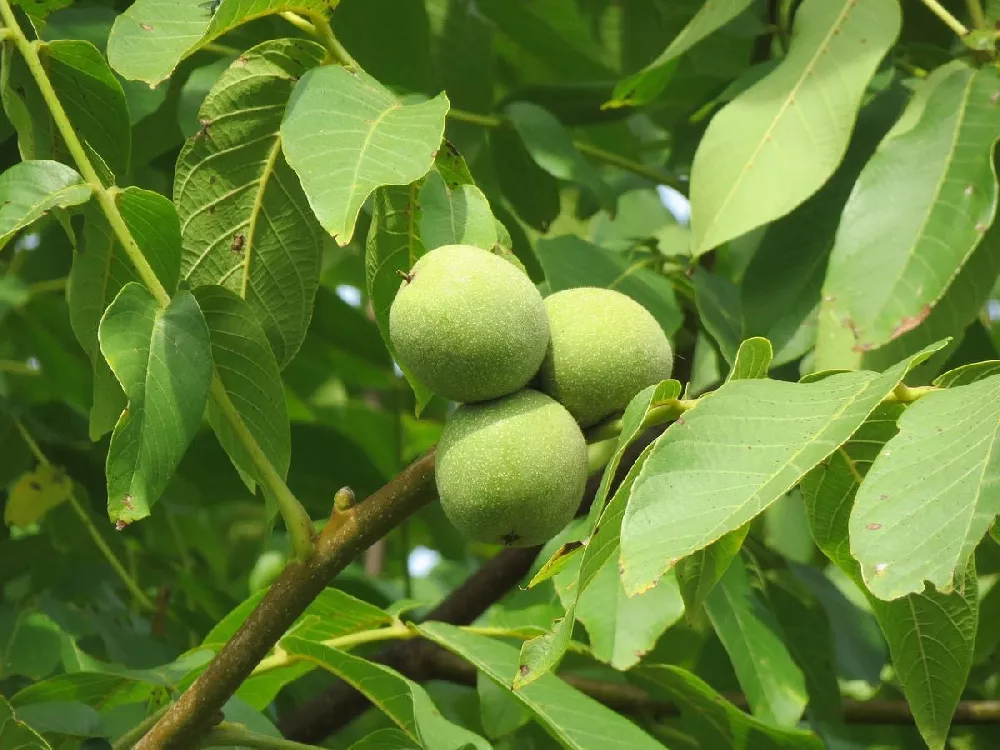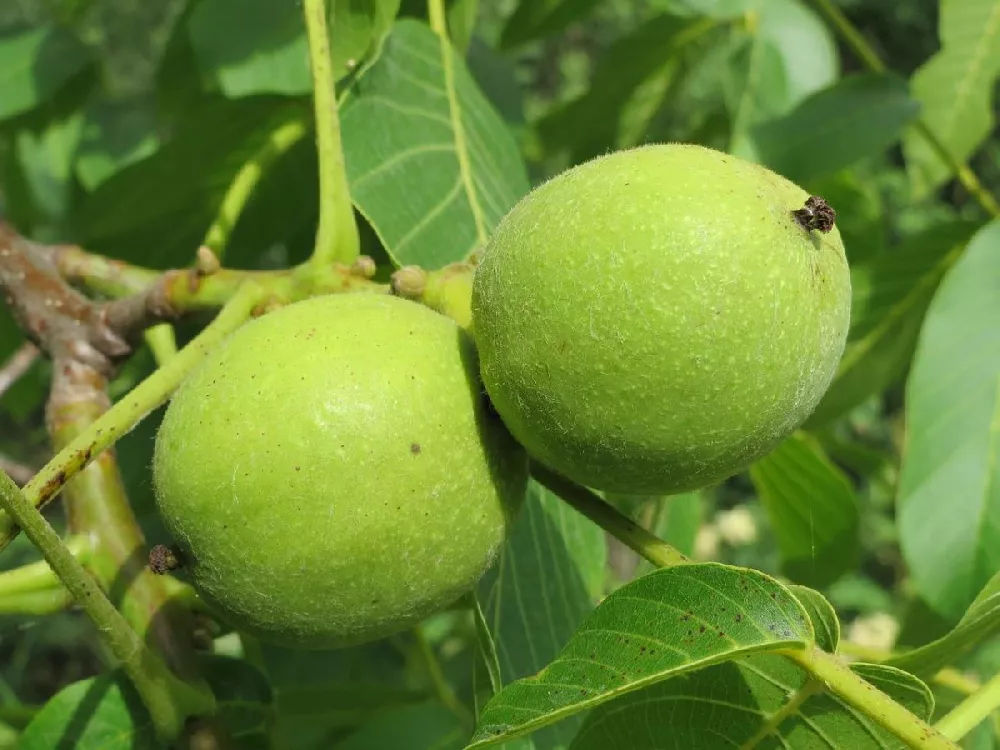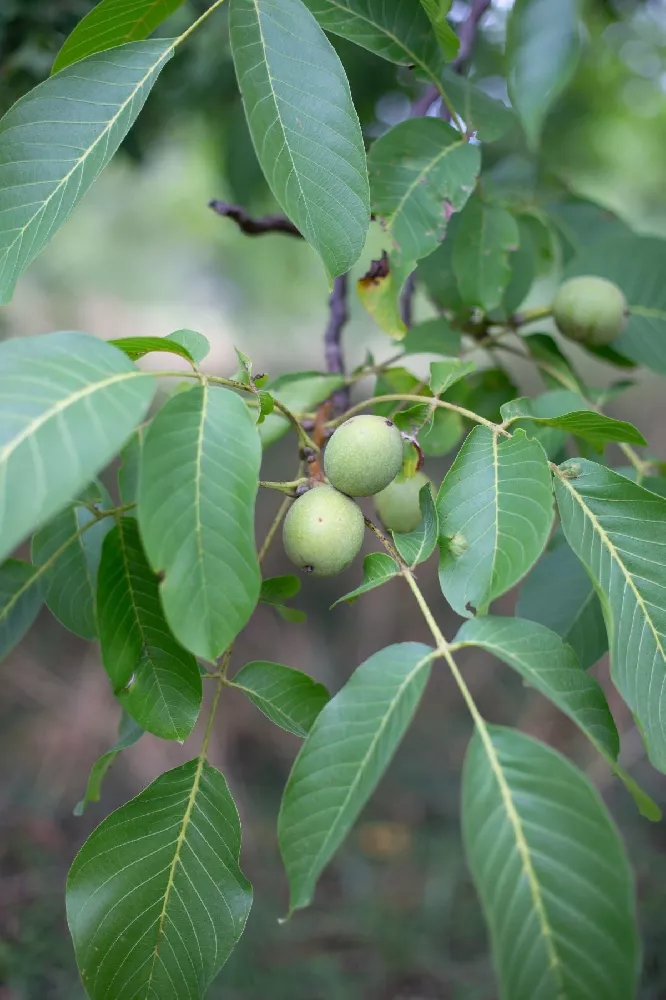- Home >
- Edible Plants >
- Carpathian Walnut Tree
Carpathian Walnut Tree for Sale - Buying & Growing Guide
The Carpathian walnut tree, known to the botanical community as Juglans regia 'Carpathian,' is a tree that provides value to your garden in more ways than one. As you would guess based on the name, this tree produces copious amounts of walnuts that you can eat right away or store for another day. Along with that edible quality, the Carpathian walnut tree is also a beautiful specimen. For instance, it develops a broad, shade-giving canopy that transforms to a bright yellow color in the fall months.
- It provides many walnuts that can be stored for a while.
- The Carpathian walnut tree has a large canopy that provides shade.
- Its foliage turns yellow in fall.
Enter your zip code to find nearby stores that may carry this plant.
Plant Care
Sunlight

Plant this tree where it can receive full sunlight every day.
Watering
In the absence of rainfall, water this plant about once per week or once every 10 days.
Fertilizing

Fertilize in spring with a balanced fertilizer or one that has plenty of nitrogen.
Planting and Care
Planting instructions
Plant your Carpathian walnut tree where it has plenty of sunlight and plenty of room to spread its branches. Fortunately, this plant is tolerant of both hot weather and frigid temperatures and proves to be drought-tolerant when mature. However, you will need to avoid areas that have waterlogged soils or are prone to flooding. Once you find a suitable location, plant your Carpathian walnut tree in a hole that is as deep as its root ball is tall and is at least twice as wide.
Watering and nutrients
Water your newly-planted Carpathian walnut tree as often as needed to keep the soil consistently moist until the roots have had a chance to establish themselves. After your tree is established, it will have good drought tolerance. Despite that, you should continue watering for the best results. Often, watering about once every week or once every other week will do the trick. Fertilize your Carpathian walnut tree during the early spring. When fertilizing, you can either use an all-purpose fertilizer or one that is nitrogen-rich.
Pollination
Surprisingly, the Carpathian walnut tree is only a partially self-fertile tree. What that means is that sometimes a single tree will produce nuts, and sometimes it will not. To ensure that your Carpathian walnut tree gives you nuts, it is wisest to plant more than one. Planting more than one Carpathian walnut tree not only facilitates pollination but also leads to greater nut yields in most cases. Usually, these plants rely on the wind to carry their pollen from one plant to another.
Pruning
Pruning for a Carpathian walnut tree is essential, especially when this plant is young. During the first few years of this plant’s life, you should prune it so that it develops a single central leader, which will become the main trunk and a few main lateral branches. You should also prune to remove any broken, diseased, or dead branches. It’s best to perform pruning during the late winter, just before the leaves return and active growth resumes.
Pests, diseases, and animals
Your Carpathian walnut tree may face several pest and disease issues during the course of its life. The most common insects that may infest this plant are walnut husk flies, aphids, red mites, and moths. As soon as you notice the presence of such insects, you should be prepared to eliminate them to preserve the health of your tree and its nuts. Diseases can also be an issue for this plant, with root rot and powdery mildew being some of the most common ones.
Harvesting
The nuts that your Carpathian walnut tree grows will be ready for harvest during the fall. When harvest time arrives, you’ll notice that some of the ripe nuts have fallen from the tree. This is a sure sign that most of your walnuts are ready for picking. Since this tree can grow quite tall, you’ll often need a long-handled tool to help your harvest. For example, you can use the handle of a large rake to shake the limbs of your Carpathian walnut tree, which should loosen any nuts that are ready to drop.
Achieving maximum results
Those who wish to guarantee nut production from their Carpathian walnut tree should plant a pollinating companion. However, for the best results, it is ideal to use a pollinator companion that is a different variety than your original Carpathian walnut tree. Using a different variety typically leads to better nuts in higher quantities. You should also remember that, like other walnuts, the Carpathian walnut tree releases a toxin into the soil that makes it nearly impossible for other plants to grow near it.
FAQs
What do Carpathian walnuts taste like?
Part of the reason that the Carpathian walnut tree is so popular is that this tree's nuts have a distinct flavor that is different than that of other walnuts and which many people find to be more favorable. That flavor is full, rich, and has a hint of sweetness that is similar to the taste of butterscotch. These nuts also have a relatively thin casing that makes it easy for you to access the edible portions inside.
How fast does a Carpathian walnut tree grow?
In most cases, the Carpathian walnut tree is a fast-growing species that can reach a considerable size. In an average growing season, this species can add as much as 24 inches of new growth. That quick growth allows the Carpathian walnut tree to reach its incredible mature size of about 60 feet by 60 feet in a relatively short time frame. That rapid growth also calls for regular pruning to keep this plant under control.
What types of walnut trees can pollinate a Carpathian walnut tree?
If you want to grow a Carpathian walnut tree for its nuts, it is not only important to have a pollinating companion, but it also matters what kind of tree that pollinating companion is. Typically, you should not plant two Carpathian walnut trees. Instead, you choose a different variety as a companion, such as nearly any English walnut cultivar or a black walnut tree.
You can't add more Product Name - Product size to the cart.
OK



